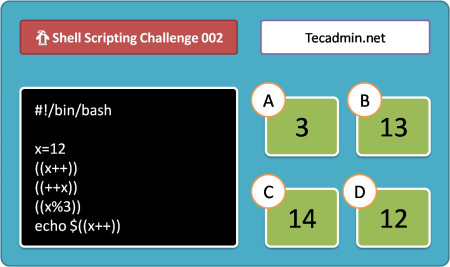In this comprehensive tutorial designed to help you efficiently create timestamped files and directories using batch scripts. Timestamping your files and folders is an essential practice to ensure proper organization and management of your data, as well as for tracking changes over time. In this guide, we will walk you through the process of obtaining the current date and time, formatting it to a desired string format, and incorporating it into the names of files and directories using simple batch script commands. No matter your level of experience with scripting, this step-by-step guide will equip you with the knowledge and skills to effortlessly generate timestamped files and directories in your daily tasks or automation workflows. Get ready to streamline your data organization and management with this easy-to-follow tutorial!
Table of Contents
- Introduction to Batch Scripts and Command Line
- Basics of Creating Files and Directories
- Creating Timestamped Files and Directories
- Advanced Formatting and Customization
- Real-World Applications
- Conclusion
1. Introduction to Batch Scripts and Command Line
Batch scripts are a series of commands executed sequentially in the Windows command prompt, also known as the command line. These scripts allow users to automate repetitive tasks, manage files and directories, and perform various system maintenance tasks. The command line is a powerful and versatile tool for users who want to harness the full potential of their Windows-based systems.
2. Basics of Creating Files and Directories
Before delving into creating timestamped files and directories, let’s review the basic commands for creating files and directories using batch scripts and the command line.
- To create a new file, use the echo command followed by a redirect symbol (> or >>) and the file path:1echo. > "C:\Users\YourUsername\Documents\example.txt"
- To create a new directory, use the mkdir or md command followed by the directory path:1mkdir "C:\Users\YourUsername\Documents\example_directory"
3. Creating Timestamped Files and Directories
Now that we have covered the basics, let’s explore how to create timestamped files and directories using batch scripts and the command line.
- First, obtain the current date and time using the %date% and %time% environment variables:12set currentDate=%date%set currentTime=%time%
- Next, format the date and time to your desired string format. For example, you can use the following format: “yyyyMMdd_HHmmss”:1set formattedDateTime=%currentDate:~10,4%%currentDate:~4,2%%currentDate:~7,2%_%currentTime:~0,2%%currentTime:~3,2%%currentTime:~6,2%
- Finally, create a file or directory using the echo or mkdir command, incorporating the formatted date and time into the name:12echo. > "C:\Users\YourUsername\Documents\example_%formattedDateTime%.txt"mkdir "C:\Users\YourUsername\Documents\example_directory_%formattedDateTime%"
4. Compose a Batch Script
Here is the full script that can create the file and directory named based on current date and time. You can utilize below for writing efficient script that needs to organize data in date and time format.
1 2 3 4 5 6 7 8 9 10 11 12 13 14 15 16 17 | @echo off :: Batch script to create timestamped files and directories :: Obtain the current date and time using the %date% and %time% environment variables set currentDate=%date% set currentTime=%time% :: Format the date and time to the desired string format: "yyyyMMdd_HHmmss" set formattedDateTime=%currentDate:~10,4%%currentDate:~4,2%%currentDate:~7,2%_%currentTime:~0,2%%currentTime:~3,2%%currentTime:~6,2% :: Create a timestamped file using the echo command and the formatted date and time echo. > "C:\Users\YourUsername\Documents\example_%formattedDateTime%.txt" :: Create a timestamped directory using the mkdir command and the formatted date and time mkdir "C:\Users\YourUsername\Documents\example_directory_%formattedDateTime%" :: End of the script |
5. Advanced Formatting and Customization
You can further customize the timestamp format by modifying the date and time string format. Here are a few examples of different formats:
- “yyyy-MM-dd_HH-mm-ss” (e.g., “2023-04-15_14-30-45”)
- “MMddyyyyHHmmss” (e.g., “04152023143045”)
- “MMddyy_HHmm” (e.g., “041523_1430”)
Note that the formatting may vary depending on your system’s regional settings. Ensure that you adjust the substring indices accordingly to match your system’s date and time format.
5. Real-World Applications
Creating timestamped files and directories can be useful in various scenarios, such as:
- Generating log files for troubleshooting and monitoring purposes
- Organizing backups and snapshots of data or configurations
- Storing different versions of a file or project for version control
- Automating the creation of reports or exports at specific intervals
- Managing temporary files generated by applications or scripts
By incorporating timestamps into your file and directory naming conventions, you can improve organization, traceability, and manageability of your data.
Conclusion
In this article, we have covered the basics of creating files and directories in batch scripts and the command line and demonstrated how to create timestamped files and directories with ease. We have also explored advanced formatting options and discussed real-world applications for using timestamped files and directories.
By mastering these techniques, you can enhance your automation capabilities, simplify data management, and ensure your files and directories are well-organized and easy to track. The flexibility and power of batch scripting and the command line make them invaluable tools for any user seeking to optimize their workflows and harness the full potential of the Windows platform.
